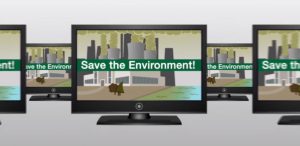United States Environmental Regulatory Landscape es un post escrito por Delaney Wehn (Fulbright Scholar en el Grado en Transporte y Logística UCJC. Reflexiones ambientales para construir el futuro de la cadena de suministro.
In the United States, each of the three branches of the government play a role in regulating the environmental landscape.
However, the executive branch exerts the strongest level of control through its federal agency the Environmental Protection Agency (EPA). Founded in 1970. The EPA conducts environmental assessment, research and education to monitor waste and emission levels in the natural environment. In turn, the EPA enforces legislation such as the Clean Air Act (which sets maximum levels of air pollution) and the Clean Water Act (which sets maximum levels of water pollution). These acts (or pieces of legislation) are passed by the legislative branch of the government (Congress). And then, enforced by the EPA with sanctions and fines.
The EPA works with state and local governments to set these national standards for many types of pollutants, such as particular matter, ozone, sulfur dioxide, nitrogen dioxide, carbon monoxide and lead.
However, sometimes disputes between states and the EPA can arise, which leads to lawsuits in which the judicial branch of the government (the Supreme Court) sets or enforces environmental standards (such as in the case of Massachusetts v. EPA).
It is interesting to note that the leaders of the EPA and standards enforced by the EPA are directly determined at any given time by the current President of the United States.
That being said, when there is a more conservative president in office. The environmental requirements will often become more relaxed, and companies and states must take action immediately to comply with new requirements. This is the case under President Trump’s administration. The opposite is also true. In which a more liberal president, such as former President Obama, will likely implement more stringent environmental standards, leading to quick adjustments in operations and logistics by companies and states. Changes in EPA regulations can have immense implications in terms of business structures and operating costs.
En el Grado en Transporte y Logística somos conscientes de las necesidades del sector. Si quieres más información (pulsa sobre plan de estudios) nos vemos en la Universidad Camilo José Cela. Puedes contactar con Marta Serrano Pérez y Tomás García Martín.

